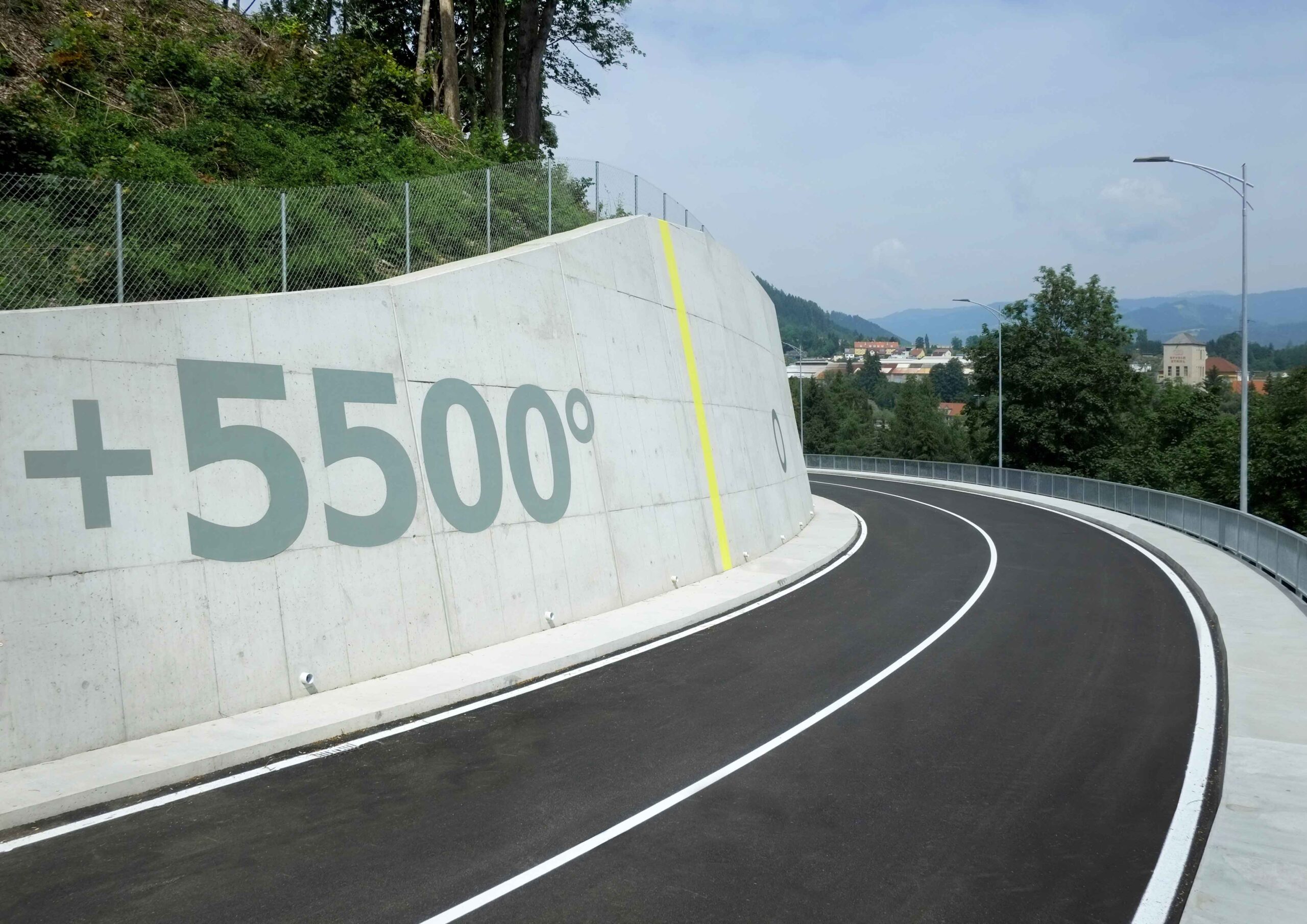Dein Warenkorb ist gerade leer!
HABITAT
Spatial installation
Landtorberg Rampe, Judenburg Austria
Opening: August 5th, 2021
The installation features a schematic representation of our solar system with the average surface temperatures on the Sun, Earth and Uranus (as of 2021). Gigantic for humans, these leaps in temperature between the celestial bodies show the fragility of our living space and the need for an active climate protection policy. In biology, a habitat is the characteristic living environment of a particular species.
“Today’s interim report from the United Nations Framework Convention on Climate Change is a red alert for our planet.” (UN Secretary General António Guterres, February 26, 2021)
Initiator: Kurt Tanner
Text by Elisabeth Fiedler:
Habitat, english
Habitat, deutsch
With friendly support:
Institut für Kunst im öffentlichen Raum Steiermark
Stadtgemeinde Judenburg, ausgezeichnet für Klimaschutz, Landesbaudirektion Steiermark
Dali Malermeisterbetrieb, 1. Aichfelder Druck GmbH,
Elisabeth Fiedler
HABITAT
Es war zu Weihnachten 1968, als die Astronauten der Apollo-8-Mission während der vierten Mondumkreisung, auf aschgraues Geröll, Staub und Krater blickend, plötzlich unwirklich schön die Erde aufgehen sahen. Mit diesem ersten Erleben des Blicks auf die Erde und dem Earthrise– Foto von William Anders war dessen Fazit der Mission: „Wir sind so weit geflogen, um den Mond zu erforschen – aber das Wichtigste war, dass wir die Erde entdeckt haben.“1) Mit jener gefühlten Erkenntnis der Kleinheit und Eingebundenheit des Menschen in ein Unendliches, aber auch die Fragilität und Verletzlichkeit der lediglich 12 km starken, zerbrechlichen und hoch komplexen unteren, für uns lebenswichtigen Schicht der Atmosphäre, der Troposphäre, unserem Lebensraum, dem HABITAT 2), war der Beginn für ein globales Umweltbewusstsein und die damit verbundene Bewegung gelegt. Das „einflussreichste Umweltfoto, das jemals gemacht wurde“3), in unserem kollektiven Gedächtnis eingeschrieben, sowie die Bedeutung unseres Handelns der Welt und dem Leben gegenüber waren in ihrer Brisanz noch nie so deutlich wie heute.
In dieser allgemein aufgeladenen Problematik sucht Bernhard Wolf nach einer möglichst einprägsamen, reduzierten, weithin sichtbaren Formensprache, die uns alle erreicht. So zieht er über die gesamte Landtorrampe händisch schmucklose Kreise als schematische Planetendarstellungen im Sonnensystem. Die derzeit durchschnittlichen Oberflächentemperaturen auf Sonne, Erde und Uranus verdeutlichen diskrepante und gleichzeitig feinst aufeinander reagierende Zustandsbilder als plakative, weithin sichtbare und verständliche Zeichen, Ikonen, Logos.
Die Straße mit der Rampe auf den Landtorberg als informellem Wahrzeichen von Judenburg mit seinem markanten Planetarium verbindet die Unterstadt mit der historischen Altstadt. Judenburg steht als Knoten wichtiger Handelsstraßen exemplarisch für Vernetzung und trägt die höchsten österreichischen und europäischen Auszeichnungen für Energieeffizienz und Klimaschutz.
Elisabeth Fiedler, Institut für Kunst im öffentlichen Raum Steiermark, Universalmuseum Joanneum
- Tobias Jochheim: „Earthrise“. Das Foto, das alles änderte, 26. Dezember 2018, 21:33, https://rp-online.de/panorama/wissen/das-foto-das-alles-aenderte_aid-35331684, S. 4.
- Vgl. CRITICAL ZONES, The Science and Politics of Landing on Earth, ed. Bruno Latour, Peter Weibel, ZKM/Center for Art and Media Karlsruhe, Germany & The MIT Press Cambridge, MA/London, England, Karlsruhe 2020.
- www.abc.net.au/science/moon/earthrise.htm
Elisabeth Fiedler
HABITAT
On Christmas Eve 1968, as the astronauts of the Apollo 8 mission were gazing out at ashen rubble, dust and craters during their fourth orbit of the moon, the Earth suddenly rose into view with a surreal beauty. Following this first experience of looking at the planet from space, as captured in his Earthrise photo, William Anders gave his view of the mission: “We came all this way to explore the Moon, and the most important thing is that we discovered the Earth.“ 1)That felt realisation of the smallness and embeddedness of man in an infinite expanse, but also the fragility and vulnerability of the just 12km thick, delicate and very complex lower layer of the atmosphere, the troposphere, our HABITAT 2), which keeps us alive, brought with it the dawn of global eco-consciousness and the environmentalist movement. The “most influential environmental photograph ever taken” 3), inscribed in our collective memory, and the importance of our actions towards the world and life have never been clearer in their poignancy as they are today. In approaching this universally charged subject, Bernhard Wolf searches for the most memorable, reduced, widely visible language of form to reach all of us. He draws plain circles by hand over the whole of the Landtorrampe access road as schematic representations of planets in the solar system. The current average surface temperatures on the Sun, Earth and Uranus illustrate discrepant and at the same time subtly interacting status images as striking, widely visible and comprehensible signs, icons, logos.
The access road up the Landtorberg, as an informal landmark of Judenburg with its striking planetarium, links the lower town with the historic old town. As a junction of major trade routes, the town of Judenburg exemplifies networking and holds the highest Austrian and European awards for energy efficiency and climate protection.
Elisabeth Fiedler, Art in public space Styria, Universalmuseum Joanneum
1. Tobias Jochheim: “Earthrise”. The photo that changed everything, 26th December 2018, 21:33, https://rp-online.de/panorama/wissen/das-foto-das-alles-aenderte_ aid-35331684, p. 4.
2. See CRITICAL ZONES, The Science and Politics of Landing on Earth, ed. Bruno Latour, Peter Weibel, ZKM/Center for Art and Media Karlsruhe, Germany & The MIT Press Cambridge, MA/London, England, Karlsruhe 2020.
3. www.abc.net.au/science/moon/earthrise.htm













